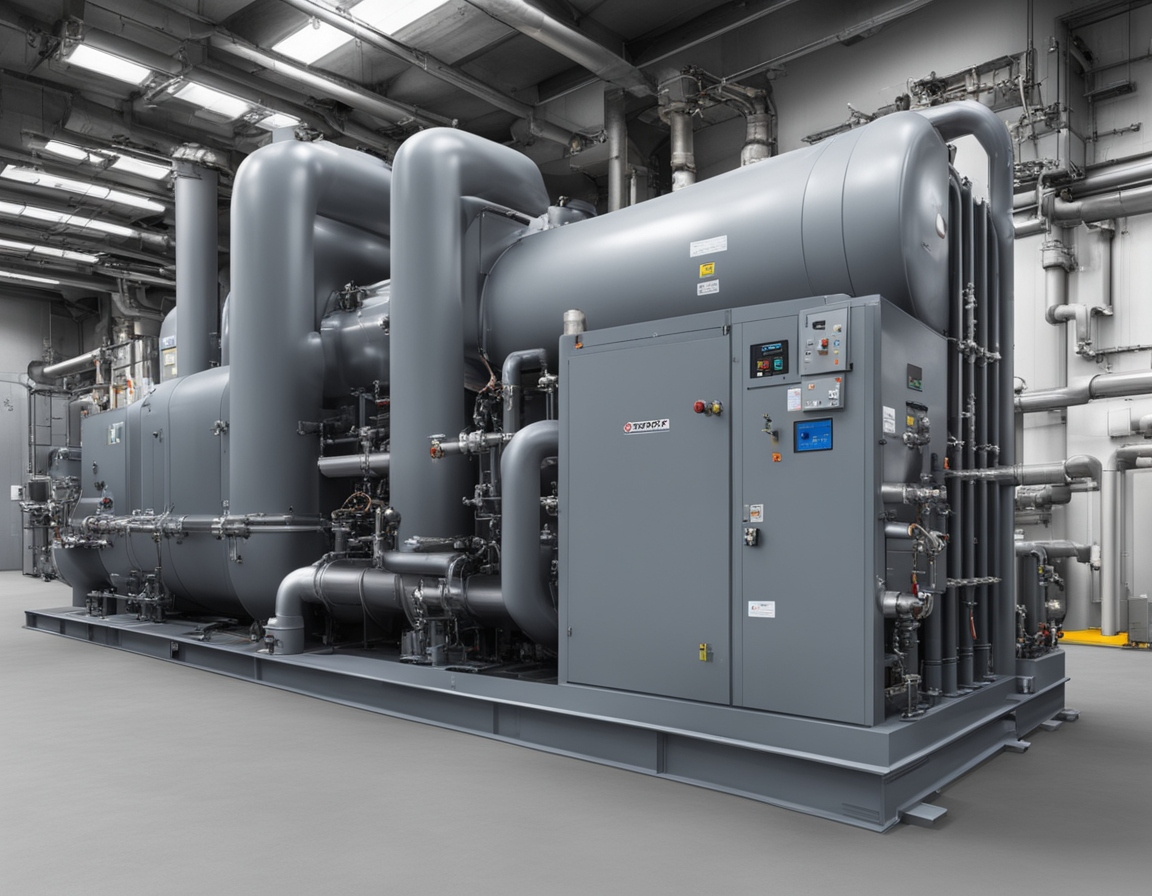
Advanced Technical Insights into Vapor Absorption Chillers (VAC)
Introduction:
Vapor Absorption Chillers (VAC) are becoming increasingly popular in industrial and commercial applications due to their ability to utilize waste heat or renewable energy sources for cooling. Unlike traditional vapor compression chillers, VACs operate on a thermally driven cycle, making them highly energy-efficient and environmentally friendly. In this blog, we will explore the advanced working principles of VACs, the types of refrigerants used, efficiency optimization techniques, and their potential applications.
Thermodynamic Cycle of VAC:
The vapor absorption chiller works on a thermally driven refrigeration cycle, which consists of four major stages-
• Evaporation: The refrigerant (typically water) absorbs heat from the surroundings and evaporates, leading to the cooling effect.
• Absorption: The vaporized refrigerant is absorbed by a strong absorbent solution (such as lithium bromide or ammonia-water), creating a low-pressure zone that enhances continuous evaporation.
• Regeneration (Desorption): The absorbed refrigerant is separated using an external heat source, allowing the refrigerant to be reused in the cycle.
• Condensation: The separated refrigerant condenses, dissipating heat to the surroundings before being reintroduced into the evaporator.
By eliminating the need for mechanical compression, VACs significantly reduce energy consumption and maintenance costs.
Refrigerants and Absorbents in VAC:
Different refrigerant-absorbent pairs are used in VACs based on the application requirements-
• Lithium Bromide-Water (LiBr-H2O): This combination is widely used in large HVAC applications where water acts as the refrigerant and lithium bromide as the absorbent.
• Ammonia-Water (NH3-H2O): Common in industrial cooling systems, ammonia serves as the refrigerant while water acts as the absorbent, allowing for lower temperature applications.
The selection of the appropriate pair depends on the desired cooling capacity, operating conditions, and heat source availability.
Efficiency Optimization in VAC:
To enhance the efficiency of vapor absorption chillers, several techniques can be implemented-
• Utilizing Waste Heat: Integrating VACs with industrial processes that generate excess heat significantly improves overall system performance.
• Multi-Stage Absorption Cycles: Two-stage and three-stage VACs enhance efficiency and reduce the required thermal input.
• Advanced Heat Exchangers: Improved heat exchanger designs enhance heat transfer, reducing energy losses.
• Hybrid Systems: Combining absorption chillers with conventional chillers or thermal energy storage systems maximizes cooling efficiency.
By implementing these strategies, VACs can achieve coefficient of performance (COP) values ranging from 0.7 to 1.4, making them highly efficient alternatives to conventional cooling technologies.
Conclusion:
Vapor absorption chillers offer a sustainable and energy-efficient solution for industrial and commercial cooling needs. By leveraging thermally driven cycles, optimizing refrigerant selection, and implementing efficiency-enhancing techniques, VACs can contribute to reduced energy consumption and operational costs. With continued advancements in heat exchanger technology and renewable energy integration, the adoption of VACs is expected to rise, making them a crucial part of the future of sustainable cooling.
Contact us now to join the revolution!
